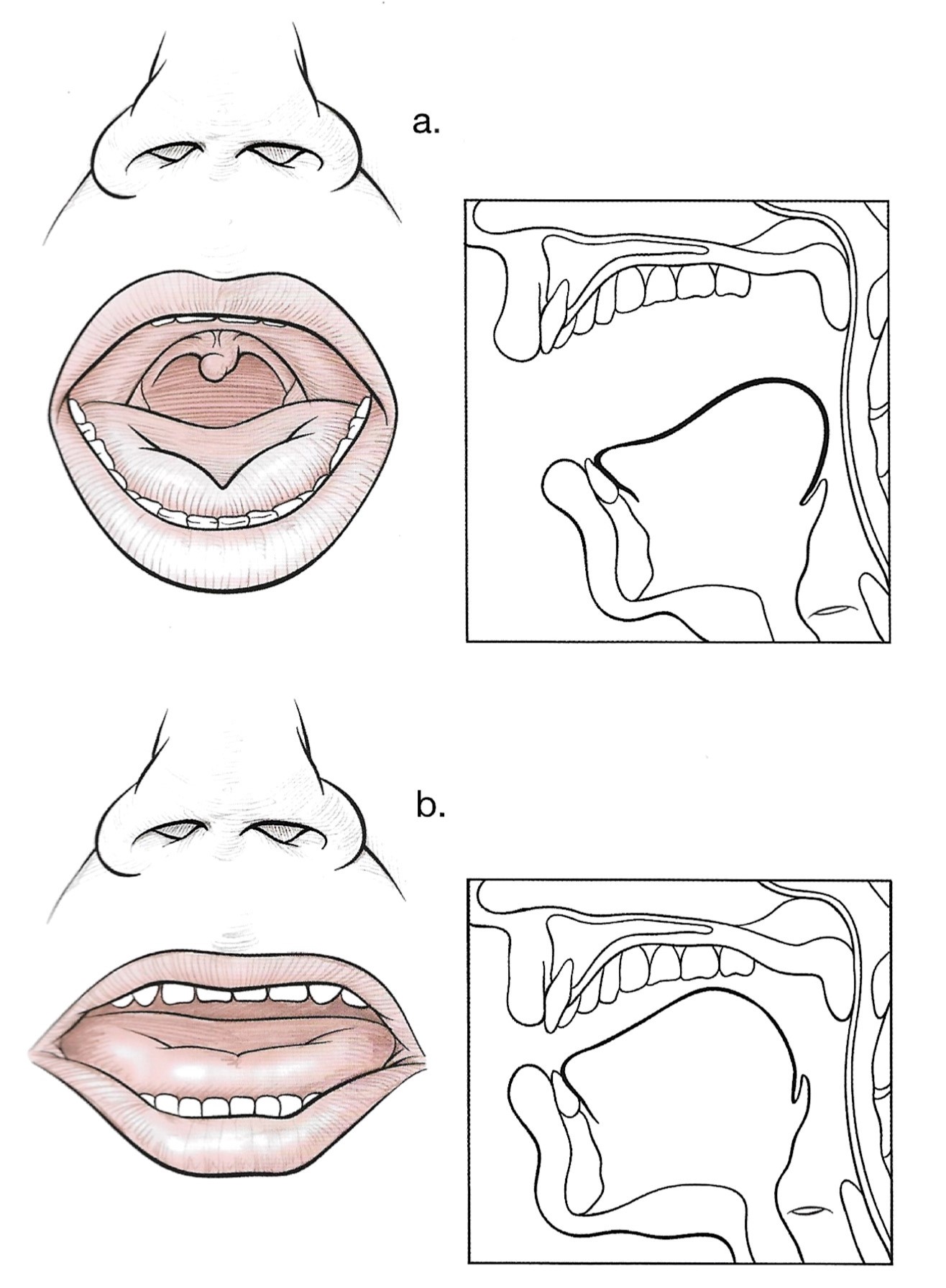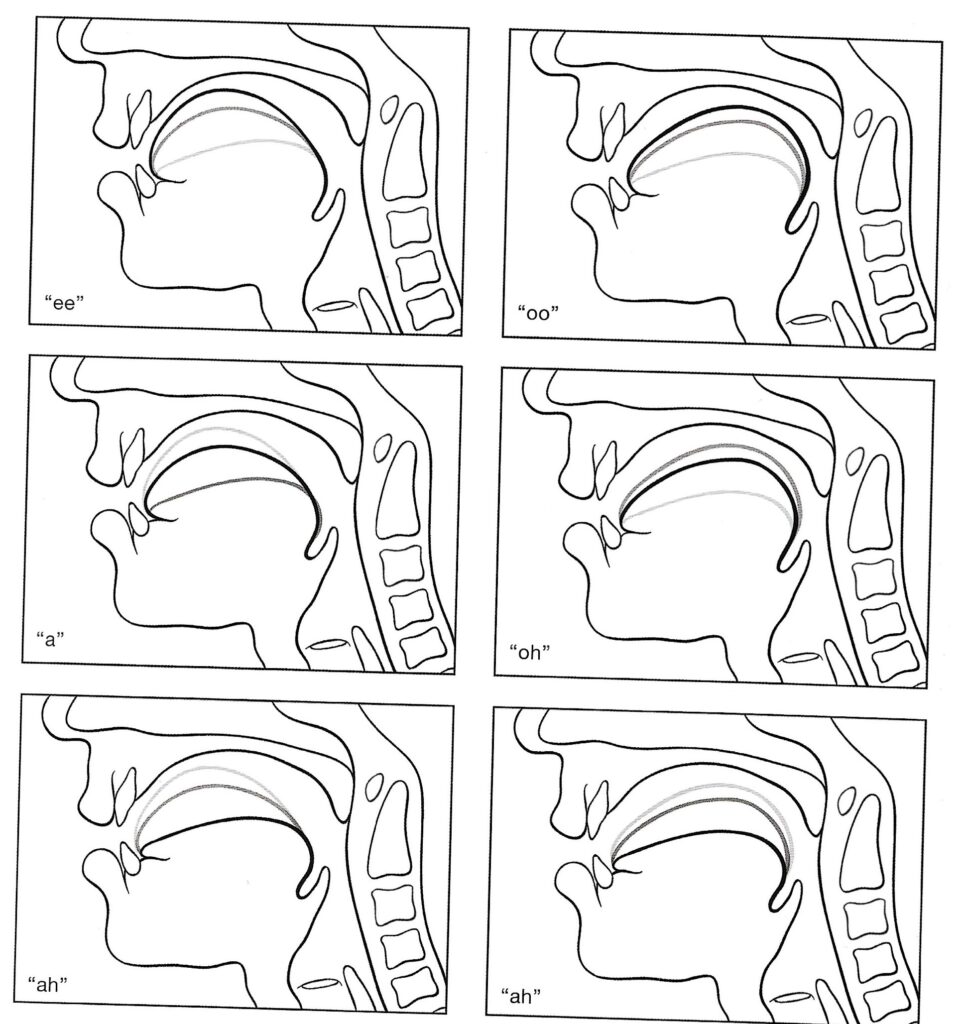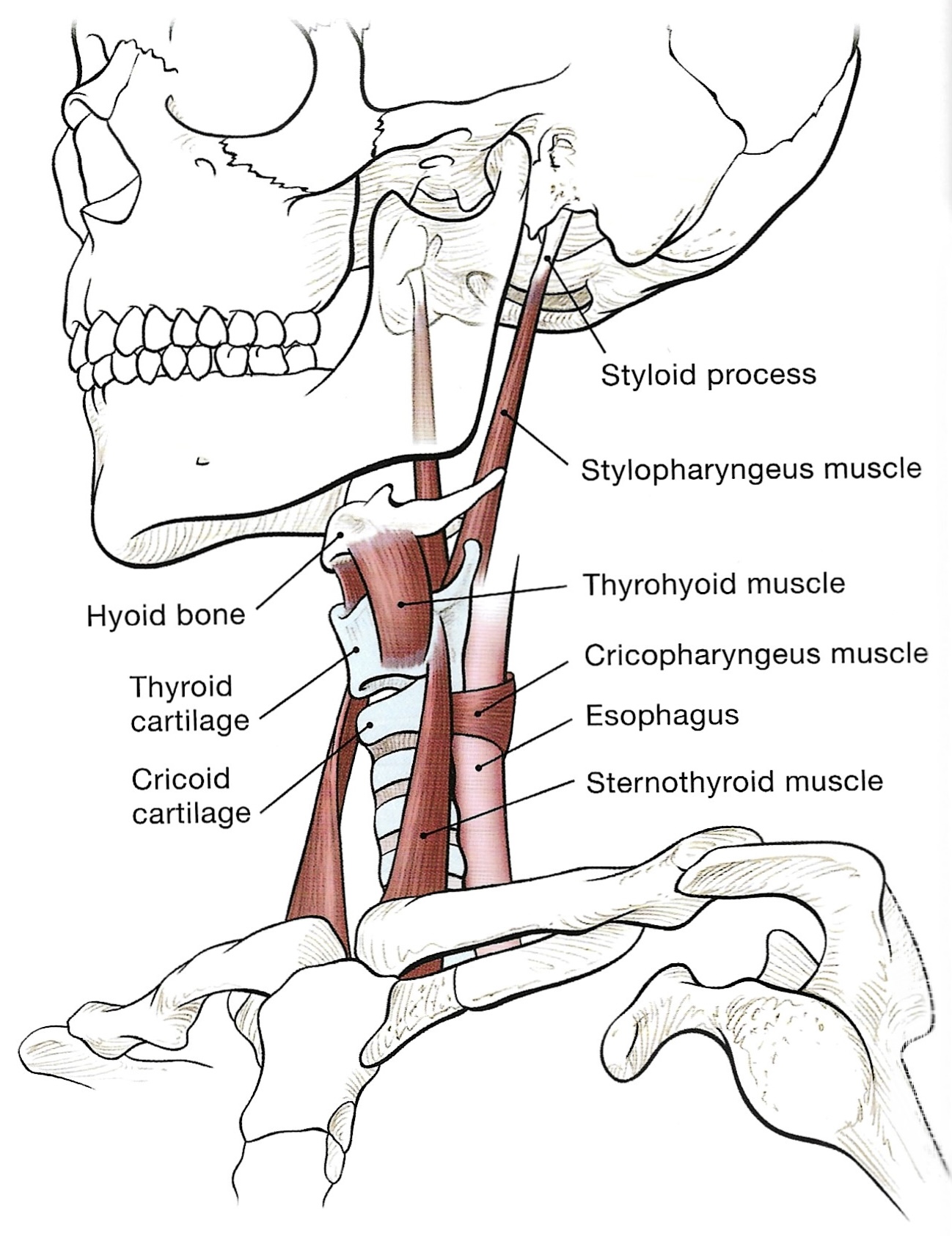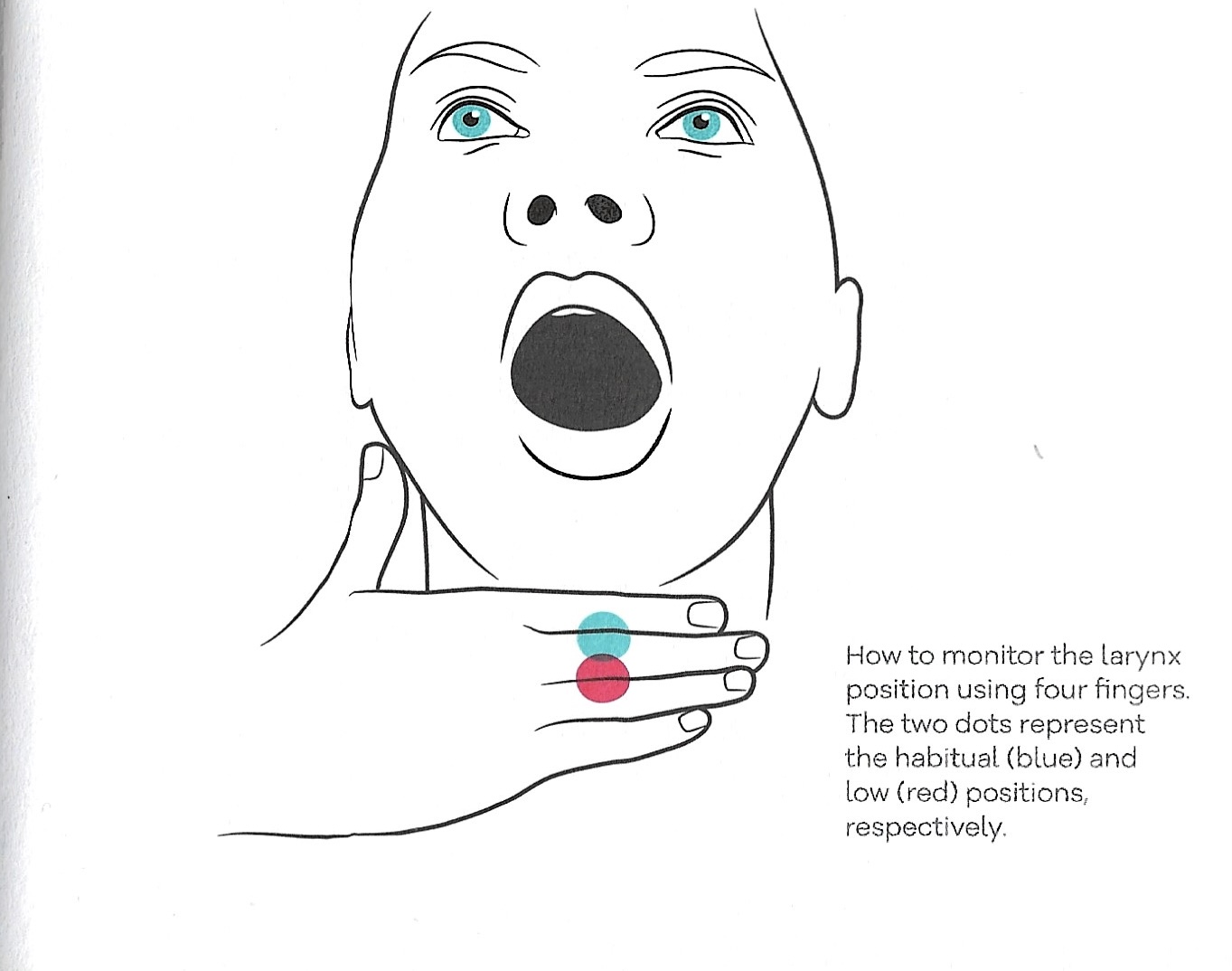Sou defensora que a laringe deve estar numa posição neutra para cantarmos em qualquer registo, ou seja, não deve subir nem descer.

Primeiro a laringe como já vimos é como um elevador suspenso por músculos. Quando engolimos um alimento ela sobe e a glote evita a entrada dos alimentos. Quando tentamos imitar um som demasiado grave baixamos a laringe e recuamos a cabeça um pouco.
“…the larynx and its intrinsic muscles precisely adjust the vocal folds so that they vibrate efficiently, creating subtle nuances in timbre, focus, and pitch. As a sound-producing mechanism, the larynx is the principal organ of voice. But the larynx is also suspended within a network of throat muscles that act on it from without and therefore is extrinsic musculature.”
Qualquer um destes movimentos subir ou descer a laringe coloca as cartilagens responsáveis por esticar as cordas vocais numa posição desfavorável ao seu funcionamento.
“Broadly speaking, when the vocal folds are relaxed and short, the pitch of the voice is lower; and when they are stretched and tension-ed, the pitch is higher.”
Logo, a laringe deve estar a ‘meio do pescoço’. Coloque dois dedos em cima da maça do Adão e fale um pouco. note que em alguns momentos a maça do Adão parece ficar mais dilatada mais saliente, mas não sobe e desce repentinamente.
“The stabilizing action of the suspensory muscles aids in the production of high tones in specific ways. As we saw in the last chapter, the cricothyroid muscles raises the pitch by stretching the vocal folds. Activity of the cricothyroid, however, is associated with the constricting action of he throat muscles, so that untrained singers tend to tighten the larynx as they ascend in pitch.

“Trained singers, in contrast, are able to raise the pitch without elevating the larynx or tightening the throat.”
Esta posição neutra da laringe é possível quando não acionamos os músculos suspensores da laringe. Para evitar isso devemos pensar que as notas da escala estão numa posição horizontal ao cantá-las. Não olhamos para cima quando estamos a subir na escala, nem para baixo quando estamos a descer. Se as notas estiverem na horizontal como se encontram no piano estão todas ao nosso alcance, o que a nível cerebral é ótimo para eliminar tensão desnecessária nos músculos suspensores da laringe e nos músculos da garganta.
“A high larynx is one of the most common problems affecting speakers and singers, but it’s very simple to get the larynx to its proper position with a series of low-larynx exercises. (…) You’ll be happy to know that the larynx is one of the parts of the body that has great sense memory. Once it gets used sitting in its normal position, it stays there, even if you aren’t doing an exercise. And with the larynx in it’s normal, healthy speaking position, you will have effectively turned down the excess brassiness of your voice.”
Outro trabalho que deve ser realizado nesse sentido, é fazer vocalizos com muita dinâmica, que abrangem uma oitava em média, e trabalhar muito bem a articulação das vogais nos diferentes registos. Assim, treinamos a mecânica de cantar escalas extensas e saltos (intervalos) mais desafiantes sem alterar muito a posição da laringe.
“Tension adversely affects the vocal cords ability to do their job. Tight throat muscles push and pull your larynx and cause strain. Learn to feel tension and let go of it. Replace the habit of tension with the habit of relaxation.”
Gallinger, Karen – The Zen of Singing: Freeing Your True Voice. 2006.
O movimento da laringe é influenciado pelo movimento da língua, pela tensão na garganta e queixo. Recomendo que leia os últimos artigos que falam no domínio da língua do queixo e sobre o palato.













